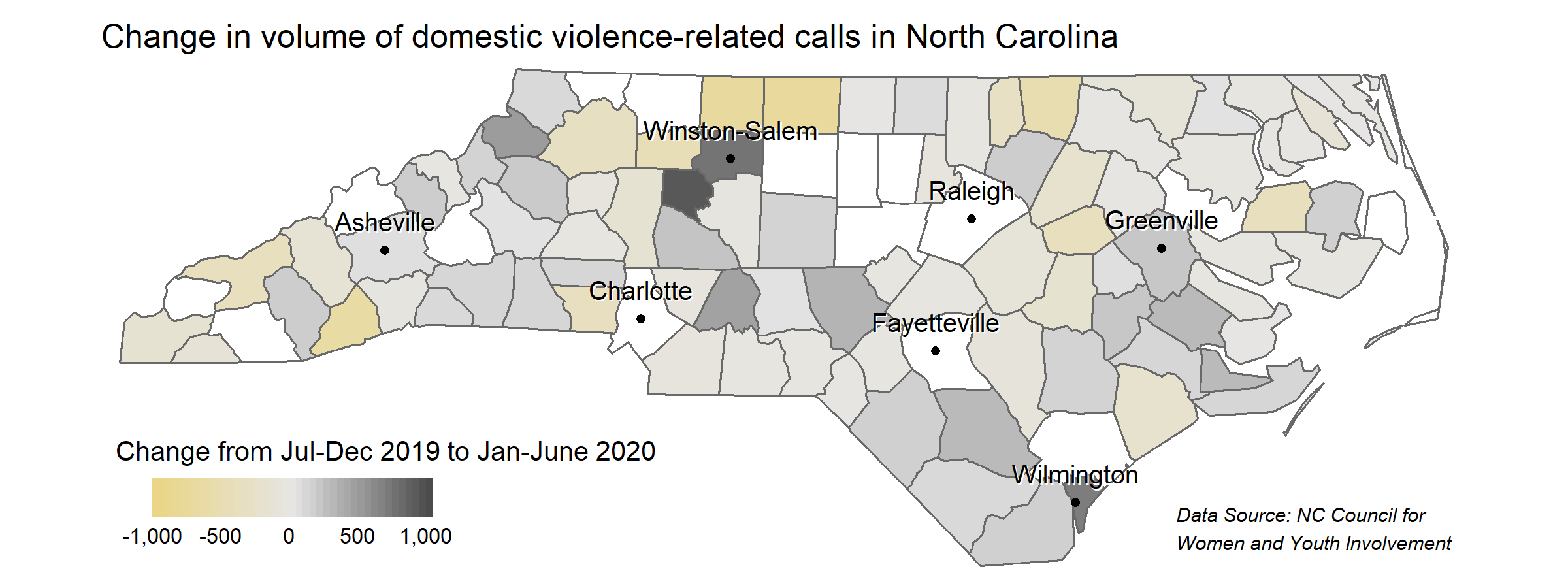By Donald Planey | October 13, 2020
Social scientists are concerned about the pandemic’s impact on rates of domestic violence. As discussed in major media sources, COVID-19 is forcing households to stay indoors at higher rates than before the pandemic. While people try to keep themselves safe from the vrius, evidence from interviews with domestic violence survivors in North Carolina suggest that the pandemic is making some victims’ situation worse.
The pandemic also poses challenges for data collection on domestic violence. One of the major data sources for domestic violence in North Carolina is the North Carolina Council for Women & Youth InvolvementNC CFW&YI. The council collects data on calls to organizations around North Carolina that aid the victims of domestic violence and sexual assault. The story of why the pandemic has made it more difficult to track domestic violence rates can shed light on the challenges of collecting data on human health and safety during these difficult times.
Domestic violence in North Carolina

The map shows calls “seeking support, information, counseling and advocacy” regarding domestic violence, by county. Counties with higher population, as one would expect, have higher call volumes.


The map and chart are perhaps more insightful: They normalize the call volumes by each county’s 2019 population by dividing the call volume by the county population. The higher the index number, the higher the rate of domestic violence-related calls per person. Normalizing by population not only helps us identify counties with high call volume, but creates a basis for documenting changes before and during a pandemic.
Challenges for tracking domestic violence during the pandemic

The North Carolina Council for Women & Youth Involvement, who provided the data for all three maps and the above chart, recognized that the pandemic has led to an overall decrease in domestic violence reportage in North Carolina, from 112,686 calls reported in the second half of 2019 down to 104,117 calls in the first half of 2020. Does that mean domestic abuse is on the decline? Not necessarily. One real possibility is that the pandemic has made it more difficult to safely contact hotlines, shelters, or service providers. In turn, this makes it harder for advocates to perform their work.
There is a great deal of geographic variation in domestic violence call volume change, not all of which can be easily interpreted. However, there are some reasons to worry: Some of the biggest hotspots for domestic violence reported declines in call volume, suggesting that fears about the impact of the pandemic on victims’ capacity to pursue support resources are valid.
